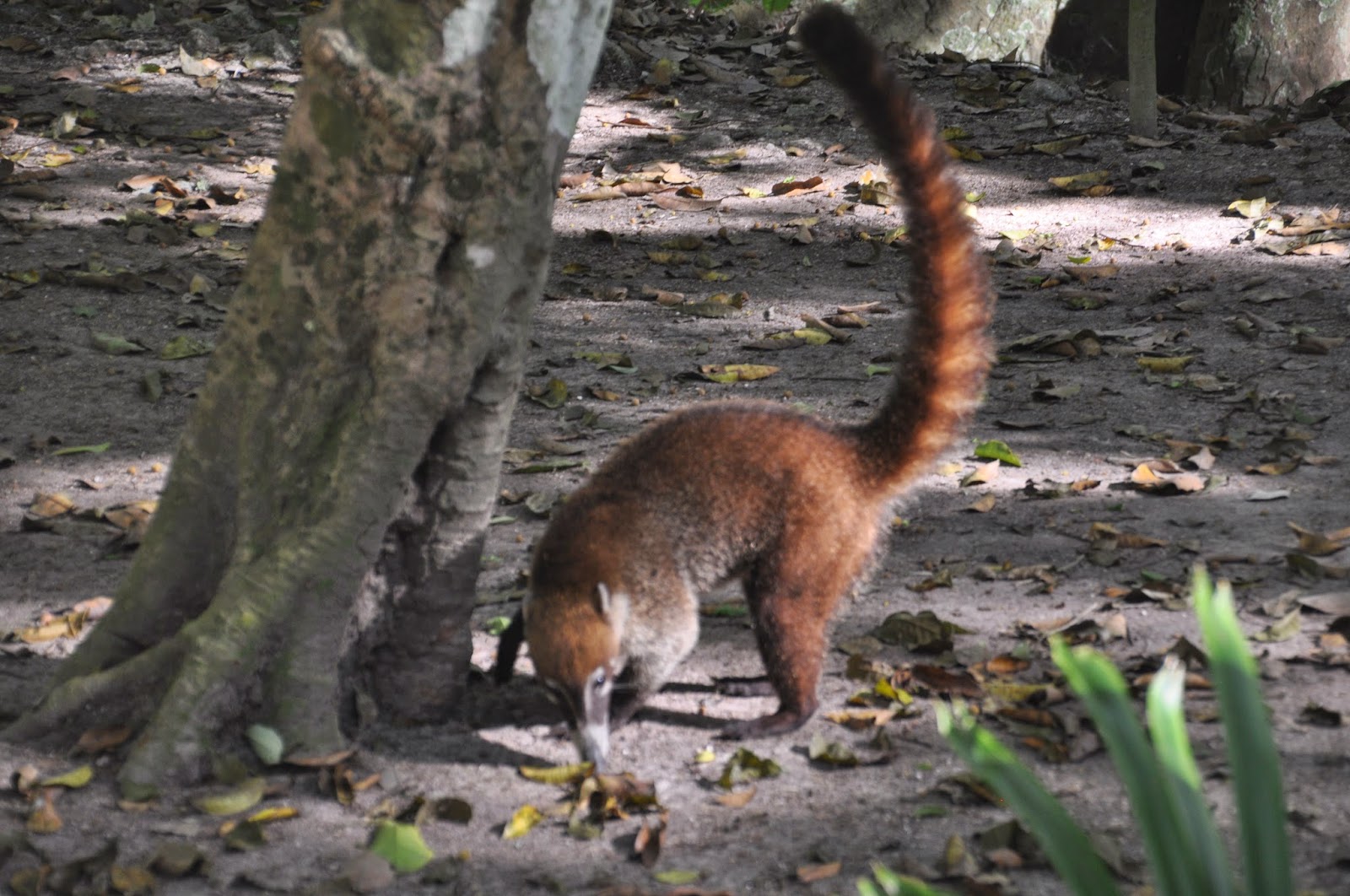Tikal (tee-KAL) is a ruined Maya city located in the northern Petén province of Guatemala. During the heyday of the Maya Empire, Tikal was a very important and influential city, controlling vast stretches of territory and dominating smaller city-states. Like the rest of the great Maya cities, Tikal fell into decline around 900 A.D. or so and was eventually abandoned. It is currently an important archaeological and tourism site.
We (Jackie and I) visited Tikal from Fronteras, Rio Dulce, leaving Whakaari in the marina district near the bridge. This involved a 4-5 hour drive across rural Guatemala to Parque Nacional Tikal on easter Weekend which was fascinating -they go crazy about their easter celebrations. We stayed two nights at Jungle Lodge, and had booked a guide for a full day, as well as a night tour with one of the guards, and a pre-dawn visit in time to be up on Temple 4 for sunrise over Tikal. So we really had ample time to properly experience this awesome World Heritage Site.
I hope my photos give some idea of how extensive this site is, and how imposing most of the temples are. I've included a summary of the history below - If you want to know more, go to:
http://latinamericanhistory.about.com/od/Maya/p/The-History-Of-Tikal.htm
Early History at Tikal
Archaeological records near Tikal go back to about 1000 B.C. and by 300 B.C. or so it was already a thriving city. By the Mayan Classic Era (roughly 300 A.D.) it was an important urban center, thriving as other nearby cities declined.
When Tikal was at its peak its population was estimated to be around 11,000 in the city center and 40,000 in the surrounding areas. At the dawn of the Maya Classic era, Tikal was one of the most important cities in the Maya region. In 378 Tikal was the dominant city in the region, controlling several other smaller city-states. Warfare was common, and sometime in the late sixth century, Tikal was defeated by Calakmul, Caracol, or a combination of the two, causing a gap in the city’s prominence and historical records. Tikal bounced back, however, once again becoming a great power.
The Decline of Tikal
The Mayan civilisation began to crumble around 700 A.D. and by 900 A.D. or so it was a shadow of its former self. Historians disagree on why the Maya civilization collapsed: it may have been due to famine, disease, warfare, climate change or any combination of those factors. Tikal, too, declined: the last recorded date on a Tikal monument is 869 A.D. and historians think that by 950 A.D. the city was essentially abandoned.
Rediscovery and Restoration
Tikal was never completely "lost:" locals always knew of the city throughout the colonial and republican eras. Travelers occasionally visited, such as John Lloyd Stephens in the 1840's, but Tikal's remoteness (getting there entailed several days' trek through steamy jungles) kept most visitors away. The first archaeological teams arrived in the 1880's, but it wasn't until an airstrip was built in the early 1950's that archaeology and study of the site began in earnest. In 1955, the University of Pennsylvania began a long project at Tikal: they remained until 1969 when the Guatemalan government began research there.
Tikal Today
Decades of archaeological work have uncovered most of the major buildings, although a good portion of the original city is still awaiting excavation. There are many pyramids, temples and palaces for exploring. Highlights include the Plaza of Seven Temples, the Palace at the Central Acropolis and the Lost World complex.
Tikal is one of Gautemala's most important tourism sites . Tikal National Park, which includes the archaeological complex and the surrounding rainforest, is a UNESCO World Heritage Site, and a much greater area surrounding the park is now a Biosphere reserve.




















No comments:
Post a Comment